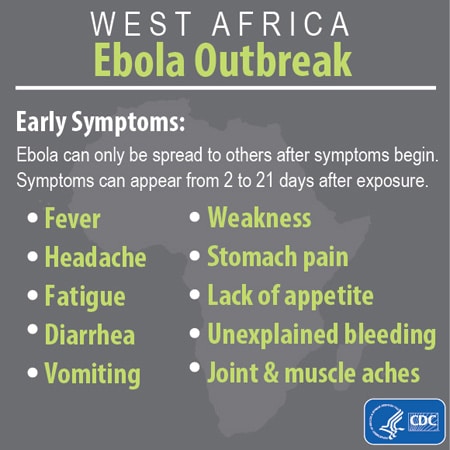At one point I wanted to run to the nearest health store and stock on face masks, hand sanitizers and wet tissues to protect myself. However, I decided to check first for information on the disease from the World Health Organization (WHO) and the Center for Disease Control (CDC) websites.
Here are some key facts I got from WHO:
- Ebola virus disease (EVD), formerly known as Ebola haemorrhagic fever, is a severe, often fatal illness in humans.
- The virus is transmitted to people from wild animals and spreads in the human population through human-to-human transmission. The initial source of past EVD outbreaks was likely human contact with wild animals through hunting, butchering and preparing meat from infected wild animals (“bush meat”), with subsequent transmission from human to human.
- The average EVD case fatality rate is around 50%. Case fatality rates have varied from 25% to 90% in past outbreaks.
- There are currently no licensed Ebola vaccines but 2 potential candidates are undergoing evaluation.
Dr Bruce Aylward, the WHO assistant director-general, warned that the number of new cases was likely to be between 5,000 and 10,000 a week by early December. Their regular updates show that deaths have resulted from 4,447 of the 8,914 reported cases. Aylward added that any assumption that the death rate was 50% would be wrong. He put the death rate at 70% because many deaths are not reported or recorded officially.
 |
| www.cdc.gov |
Moreover, the CDC website clarified that the EDV is killed with hospital-grade disinfectants (such as household bleach). Ebola on dried on surfaces such as doorknobs and countertops can survive for several hours but the virus in body fluids (such as blood) can survive up to several days at room temperature. Also, there is no evidence that mosquitos or other insects can transmit Ebola virus. Only mammals (for example, humans, bats, monkeys and apes) have shown the ability to spread and become infected with Ebola virus.
Here's a useful infographic on the EDV with information mostly gathered from the CDC. It's not mine and I just got it from Google images but the information are very helpful in understanding this disease.



Great post Wiggletoes on Ebola! It's funny: We just created an amazing Infographic on "Ebola Virus. What Is It? Interesting Facts" because we found people were missing the essential facts about Ebola.
ReplyDeleteCheck it out: www.BioMedicalWasteSolutions.com/What-Is-Ebola/
Let me know what you think:)